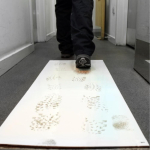Biochem/physiol Actions
RLN3 (relaxin-3) functions as a ligand for the leucine-rich repeat-containing G-protein-coupled receptor (LGR), LGR7. It also acts as a ligand for orphan receptor GPCR135, or SALPR (somatostatin- and angiotensin-like peptide receptor). RLN3 acts on LGR7 resulting in stimulation of adenylate cycle; RLN3 acts on GPCR135 to prevent activation of adenylate cyclase. The RLN3–GPCR135 signaling pathway, functions alongside GABA neurotransmitter in specific brain areas, and has regulatory effects on putative GABA neuronal networks. It also interacts with pathways containing CRF (corticotrophin releasing hormone)-like peptides and their receptors. CRF-like peptides and their receptors are implicated in stress-induced autonomic and behavioral changes. RLN3–GPCR135 system is overall involved in arousal, learning and memory, stress, and locomotor activity.
General description
RLN3 (relaxin-3) is a relaxin peptide, belonging to the insulin superfamily, with each member containing two peptide subunits linked by three disulfide bridges. This protein shows a restricted expression pattern in the brain, mainly in lateral periaqueductal gray, nucleus incertus, and central gray regions in the brainstem. This protein is highly conserved across a range of species from fish to mammals.
Physical form
Sterile filtered through a 0.2 micron filter. Lyophilized with no additives.
Reconstitution
Centrifuge the vial prior to opening. Reconstitute in water to a concentration of 0.1-1.0 mg/mL. Do not vortex. This solution can be stored at 2-8°C for up to 1 week. For extended storage, it is recommended to further dilute in a buffer containing a carrier protein (example 0.1% BSA) and store in working aliquots at -20°C to -80°C.







